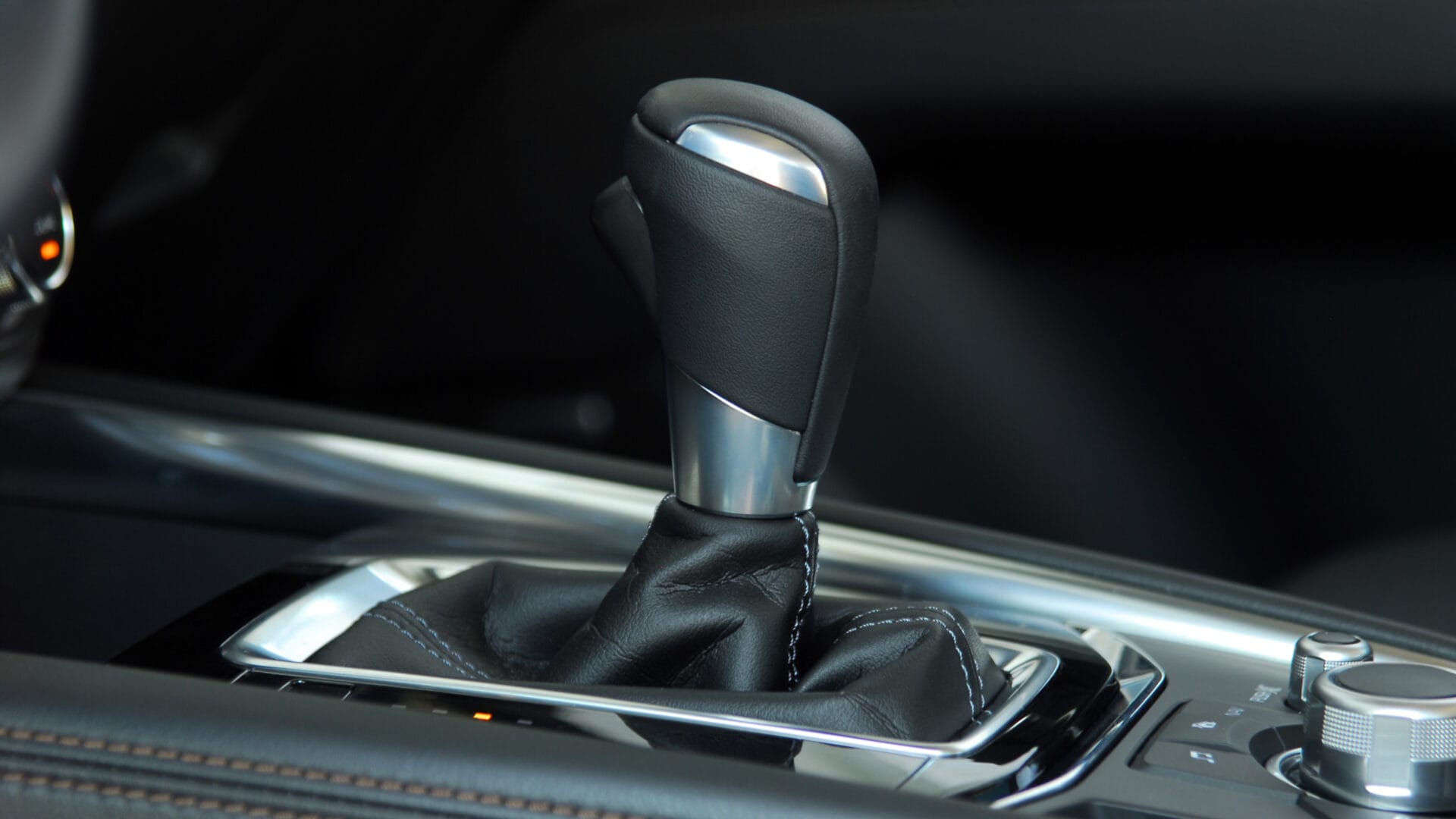Automatic Transmission Only Shifts Manually | Reasons and Fixes
The automatic transmission technology provides a smooth and comfortable driving experience, especially in heavy traffic. However, you might come across a faulty one that only shifts manually. With an automated transmission, this is the last thing you want.
So, why does an automatic transmission only shift manually? Sometimes, it happens due to a malfunction in the transmission’s electronic control system. This issue can also be triggered by various factors, including sensor malfunctions, electrical glitches, or damaged wiring.
In this article, we’ll explore the cause of this issue, diagnostic procedures, potential solutions, and so on to ensure your transmission shift smoothly.
Understanding Automatic Transmission
Automatic transmission, the marvel of modern engineering, seamlessly adjusts gear ratios as your vehicle cruises through miles of open road. Utilizing a torque converter it ensures smooth gear shifting, appealing to every driving enthusiast. Monitoring speed, engine load, and throttle position optimize gear shifters for fuel efficiency, power, or a balance of both—much like a finely-tuned Camaro in the hands of a skilled driver.

Why does Automatic transmission only shifts manually? Causes & Solutions
Ever felt like your car’s automatic transmission decided to play DJ and switch tracks on its own? Here’s the scoop: Meet the Transmission Control Module (TCM), the brain of your ride, occasionally getting a little mixed up and inspiring your car to take a spontaneous manual spin. Imagine it saying, “I’ve got this shift, TCM!”
Why does this happen?
Contaminated fluid, damaged brake pads, worn-out clutch plates, and improper fluid levels or low-quality fluid are common culprits for this only sport mode. Let’s know the causes and their fixes in detail.
Troubleshooting: Automatic Transmission Only Shifts Manually
Faulty Sensors
Sensor failure is a common cause of manual shifting. The transmission control module depends on sensors like the vehicle speed sensor and throttle position sensor. When sensors fail, the TCM doesn’t get accurate data, so the gear selector can’t do the gear change automatically.
However, confirming that it’s a faulty sensor is vital. Fortunately, some symptoms help you identify a faulty sensor quickly.
- There will be erratic shifting behavior where harsh or stick shift and poor acceleration or high engine RPMs will be seen.
- A check engine light is also a symptom of this problem.
- Lastly, your vehicle may go into “fail-safe mode” if it has sensor issues. This mode enables you to drive to a repair facility for diagnosis.
Fix
If a sensor like a vehicle speed sensor or throttle position sensor fails, replacing it usually fixes the problem. Here’s how you can do it;
- Disconnect the battery for safety.
- Use the vehicle’s service manual to find the sensors, as they vary heavily between cars.
- Remove any components that come in the way of the sensors to have access to them.
- Use a socket or wrench to loosen and remove it from its mounting location.
- Take the new sensor and secure it using your hand at the position first, then use the wrench to fit it properly.
After installing the new sensor, the transmission control module should receive accurate data for automatic shifting.
Electrical Problems
Wiring issues or electrical failures in the transmission control module (TCM) can disrupt automatic mode communication, which controls the paddle shifters.
Since the TCM is heavily dependent on electrical connections, an electrical problem can stop the signals to the transmission to change gear automatically from higher gear to lower gear.
Well, to confirm that it’s an electrical problem, there are several signs you can watch out for.
- Loss of power or reduced performance.
- The vehicle will also struggle to accelerate.
- Overheating.
- A burning smell or visible signs of overheating under the hood.
Fix
The first step to fixing it is to find the root of the problem. For this, we recommend you use a diagnostic scanner and scan for Diagnostic Trouble Codes (DTCs) and retrieve any stored DTCs from the vehicle’s computer.
Watch the video to diagnose the issue quickly. Inspect all wiring connections for loose, damaged, or corroded connectors, wires, or terminals and confirm by using a multimeter.
Once you have identified the problem, here’s how you fix it;
- If only a few wires are damaged, repair them by splicing in new wire sections using solder and heat shrink tubing.
- But if it demands, replace corroded terminals and connectors without thinking twice.
Here’s a video if you don’t know the proper method to solder wires;
Fluid and Filter Problems
Low transmission fluid or a clogged filter may cause this problem as well. The transmission uses manual shifting to protect itself from these issues. Low fluid levels lower the transmission hydraulic pressure, affecting gear engagement. If you sense a noticeable pause between gears or feel a jolt during shifts that resemble the abruptness of a manual transmission, your automatic gearbox might be asserting its independence.
It is mostly due to the restricted flow of transmission fluid. Well, you can simply check the filter for any dirt and debris to confirm it’s a clogged filter.
Loss of power and overheating can also cause this problem.
Fix
Replace trans fluid and filter to restore transmission hydraulic pressure and clean the filter. Here’s how you do it;
- Put your car on a level surface and secure it with jack stands.
- Locate the transmission pan, place a drain pan under it, and drain the fluid completely into the drain pan.
- Carefully remove the old transmission filter, and place a new one.
- Remove the old gasket from the transmission pan and install it with a new one.
- It’s time to reattach the transmission pan to the transmission.
Mechanical Failures
A damaged clutch or solenoids may require manual transmission to prevent further damage. The clutch in auto transmission may wear over time, causing slippage, a spongy clutch pedal, and vibration felt through the clutch pedal.
Fix
Fixing internal mechanical issues is not that difficult. Let’s know in a few easy steps.
- Put your car on a level surface, secure it with jack stands, and disconnect the battery.
- Locate the transmission and exhaust pipes and electrical connections that may stop you from unmounting the transmission.
- Support the transmission with a jack and remove the bolts securing it to the engine block.
- Locate the clutch, remove the bolts, and take the old clutch out.
- Install the new clutch in the same position and reinstall everything back in place.
How To Identify Automatic Transmission Manual Shifting
Understanding when your car slows down without your command is crucial in deciphering its mysterious manual-shifting tendencies.

Unusual RPM Fluctuations:
When your automatic transmission decides to take matters into its own hands, one of the first indicators you might notice is the engine RPM behaving like a rollercoaster during shifts. Picture this: you’re smoothly accelerating, and suddenly, there’s a noticeable surge or dip in RPM when you shift 1st gear to 2nd gear or 3rd gear to 4th gear. This rollercoaster ride in engine speed is a clear signal that manual shifting might be at play.
Delayed or Harsh Shifts:
Automatic transmissions are designed for seamless gear changes, but when they start behaving like a teenager learning to drive a manual, delays, and rough transitions from 5th gear to 6th gear become apparent. If you sense a noticeable pause between gears or feel a jolt during shifts that resemble the abruptness of a manual transmission, your automatic gearbox might be asserting its independence.
Unexpected Engine Braking:
Imagine lifting your foot off the accelerator, expecting a gentle coast, but instead, you feel an unexpected drag as if the engine is putting on the exhaust brake. This phenomenon, known as engine braking, can be a clear sign that your automatic transmission is embracing manual control.
FAQ
Why Does My Automatic Car Have A Manual Shift?
Your automatic car has a manual shift mode option for a more personalized driving experience. It’s like having the best of both worlds. You can let the car handle shifts automatically for convenience, or take control and manually shift gears for a bit more involvement in your drive. Manual mode is all about giving you the flexibility to choose how you want to navigate the road.
Is Manual Shifting Bad For Automatic Transmission?
No, occasional manual shifting in an automatic transmission is generally fine. It’s like adding a personal touch to your driving experience. However, consistent or aggressive manual shifting can lead to increased wear over time. So, enjoy it occasionally rather than making it an everyday habit for the well-being of your car’s transmission.
Why Is My Automatic Gearbox Not Changing Gears?
Dirty fluid, tired clutches, or electronic glitches can cause your automatic gearbox not to change gears. It’s a simple fix: give your transmission some care—clean the fluid, check clutches, or let a mechanic fine-tune electronics.
What Causes Delayed Shifting In An Automatic Transmission?
As your car ages, the small parts of the shift solenoid wear out due to vibrations and heat, causing delays in gear shifts. Also, if the transmission filter gets clogged with debris, it’s like a traffic jam, slowing down the fluid flow and making the gear shift engage slowly. To keep your car dancing smoothly, give these parts a well-deserved break or a clean path to do their job.
Conclusion
So, we learned that when an automatic transmission only shifts manually, it’s because of an electronic control system malfunctioning or internal mechanical problems. Your vehicle’s safety and smooth operation depend upon diagnosis and fixing these problems.
By understanding the root of the problems and applying the following fixes, you can easily eliminate this issue. Furthermore, the preventative measures should help you stop facing this problem ever again. Overall, regular maintenance can keep your automatic gearbox running smoothly.






